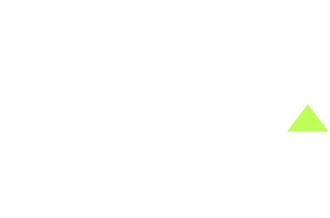
VILLAGE BELLE HOTEL
The Village Belle is a shining example of the character and style that make St Kilda such an iconic part of Melbourne. Having assisted with planning for a renovation in 2007, UPco has a special connection to this heritage building – so we decided to take a look into its colourful history and evolution over time. UPco’s Angela Croome was involved in the redevelopment, and shared some of the insights she gained along the way.

Let’s start with the heritage of the Village Belle. What can you tell us about its back story?
The Village Belle Hotel is an historical building that dates back to the 1850s. Even then, St Kilda was something of an entertainment destination. There was a bush racecourse near the hotel, which hosted events such as the St Kilda Cup – and this drew a crowd from all around. At this point, we were also in the midst of the gold rush, which saw land prices rising and wealthier people moving to St Kilda.
It’s believed that the Village Belle was constructed by Edward Peel in 1854, initially as a modest single-storey structure with two or three rooms and a steeply pitched roof. Peel’s intent was to gain a liquor license, but he had problems obtaining one, and it wasn’t until the following year that permission was granted to Edward Stead. The Village Belle opened for business, and became the last stopping point for travellers coming to Elwood from the bush.
How did the building and its context change over time?
By the late 1880s, cable cars were in place across Melbourne, which stimulated property growth and made St Kilda an especially attractive destination for day trippers. Presumably boosted by this influx of customers, the Village Belle expanded – becoming a two-storey Victorian Hotel in 1891. The extension was designed by William Pitt, who was one of the most outstanding architects of Melbourne’s ‘boom’ era, responsible for other icons such as the former Melbourne Stock Exchange and Olderfleet building.
Following the establishment of the St Kilda Foreshore Trust in 1906, St Kilda continued to evolve under the guidance of Carlo Catani, who was chief engineer of the public works department. Catani remodelled parts of the shore to resemble a European resort, with a split level esplanade, amusements, dance halls and theatres – and in following years, Luna Park, Palais de Dance and St Kilda Baths were built.
St Kilda was hit hard by the depression, and there were arguments that the carnivals and circuses were attracting the ‘wrong class’ of people to St Kilda. But in fact, these amusements ended up having the opposite effect, brightening up business and maintaining the preeminent popularity of ‘the cosmopolitan land’. By the 1950s, St Kilda was one of the most glamorous parts of Melbourne.
The 1960s and ‘70s saw the new Esplanade Hotel (the ‘Espy’) additions built, the Upper Esplanade’s Art Bank created (which still thrives today) and in 1980, the inaugural St Kilda Festival was held. Against this backdrop, the Village Belle remained a consistent figure – an impressive feat, considering the changes happening all around.
When did UPco become involved with the Village Belle?
The UPco team (then SJB Planning) was engaged in 2007 to assist in gaining approval for a modern refurbishment of the Village Belle. The plan was to increase the floor area with a contemporary glazed addition: a three-level mixed use building that comprised residential units, office space, hotel / gaming spaces and basement parking.
The design also featured a retractable glass roof providing ‘outdoor’ dining in all weathers – and the addition was set at an angle to the historic building along Barkly Street, showcasing the original northern wall of the building.
The site is located in HO33, which is a heritage overlay that aims to conserve and enhance places of natural or cultural significance, and ensure that development does not adversely affect the significance of heritage places. Of course, all of this was top of mind for the project team, and had to be factored into every decision.
Throughout the process, we worked closely with the owners, the project architects and Council to initially obtain a planning permit for the proposed works, and approval for numerous subsequent amendments. It was not a straightforward process, largely due to the perceived noise issues caused by the retractable roof. This obstacle was overcome by imposing restrictions on when the roof can be opened (along with a lot of acoustic measures used in the construction so that residents and patrons of the Hotel can co-exist).
With heritage projects, unexpected things can also happen to throw a spanner in the works – and with the Village Belle, one such example was the collapse of an historic “Orlando Wines” sign during construction. It turned out that the sign was rusted through and could not be restored, so we had to seek approval from Council for its removal. Never a dull moment with an old building!
What do you like most about the Village Belle and its story?
Heritage projects are not always the easiest, but ensuring the continued life of a beautiful old building brings an extraordinary amount of satisfaction. It is wonderful to see a building stand the test of time amid times of change, and the Village Belle really has. St Kilda has transformed a lot over the years, but it has always had a vibrant, expressive spirit – and we are proud to see the Village Belle preserve its history, while retaining its relevance to people today.

Cover image courtesy of Australian Venue Co.
